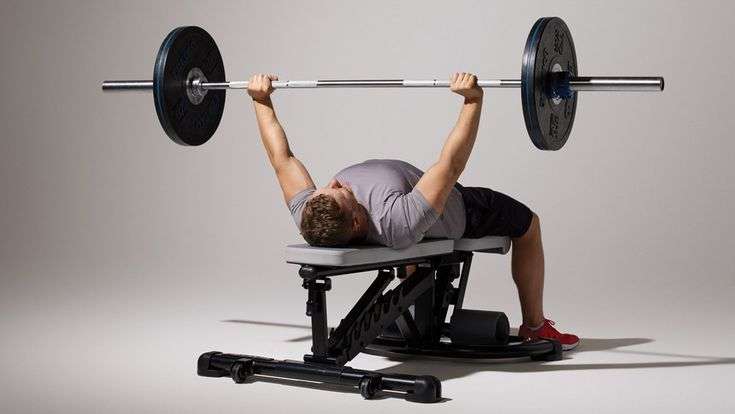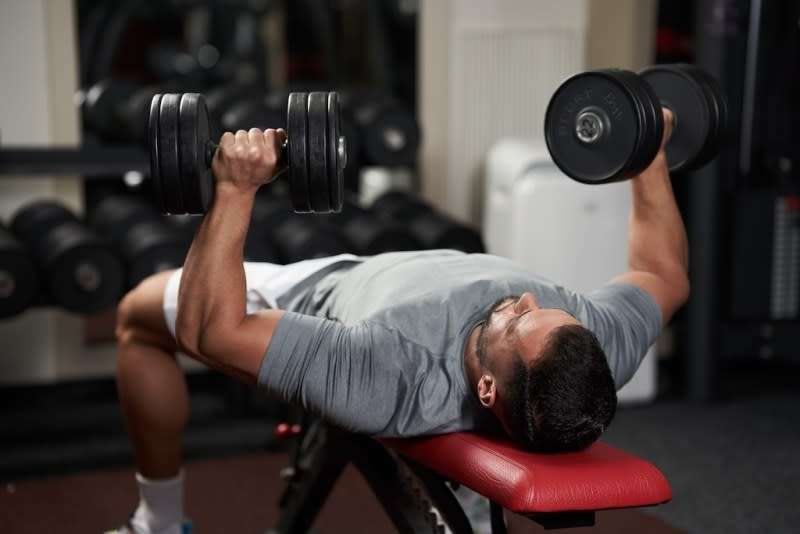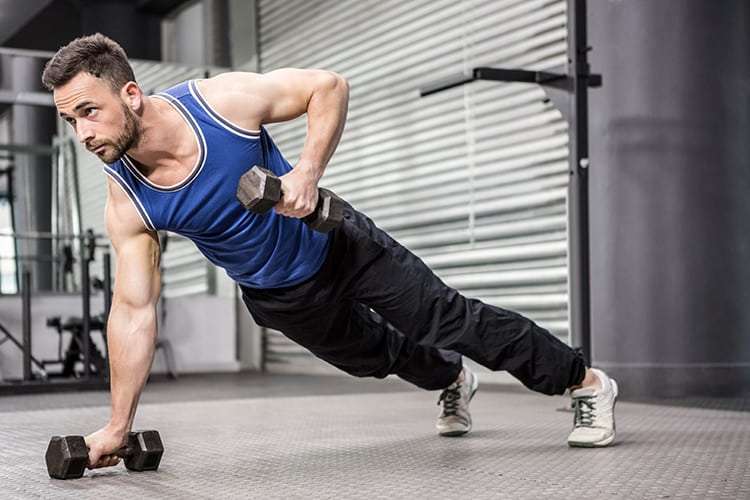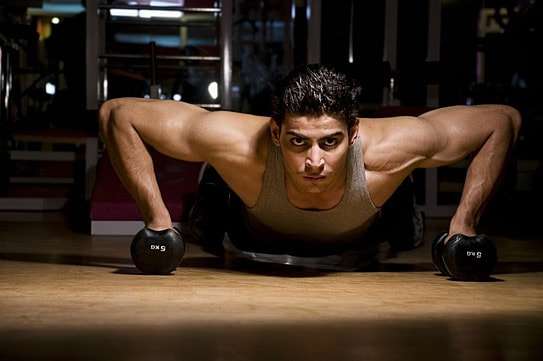What is a Push Day?
A push day, an exercise plan which involves working out muscles that are used in pushing exercise. The exercises here involve movement of weight away from the body including bench press or overhead press. The exercises involved in the push-day mainly involve push type movements where your arms lock out at the completion point of the movement and you involve the chest shoulders and triceps.
Normally, on push days, emphasis should be made on upper body. Nevertheless, you might want to put leg exercises into your push day program, or you might want to arrange separate day at the gym when you train your lower-body muscles. In any case, the use of push days in your training program is very successful, as pushing motions comprise a central component of building strength. You can use anabolic steroids for fast muscle growth.
Having created the idea of the push days and their advantages, you can pay more attention to the muscle groups they target.
Which Muscles Are Targeted During a Push Day Workout?
The main muscle groups that are involved during a push day include Pectorals (Chest Muscles) major and minor, Deltoids (Shoulder Muscles) and Triceps Brachii (Upper Arm Muscles) muscles all of which enable pushing exercises. These are the muscles that are very important in flexion and adduction of the arm hence necessary when conducting any pressing exercise which is central to a push day exercise program.
Working the pectorals, deltoids, triceps on a push day workout, you involve the muscles which perform most of the pressing activities. The result of strengthening these muscles is increased overall pushing strength, a better body shape in the upper part, and increased ability in other demanding activities on a daily basis, involving pushing movements. So, now, it is time to proceed to the push day workout routine, which will exercise these muscles in action!
Best Push Day Workout Routine

This is a powerful workout regime performed during a push-day that targets the shoulder, triceps and the chest. These exercises are aimed to redeem the most strength in those muscle groups and to hypertrophy them.
1. Barbell bench press: 5 sets of 4 to 6 repetitions
The barbell bench press type of exercise is another traditional exercise whose primary arm muscle active is the chest with the shoulders and triceps as secondary muscles. The movement is very efficient in the strengthening and enlargement of the chest. The novices get a considerable increase in body muscles thickness within only a few months of regular exercises.
How to do:
- Put yourself flat on the bench with your eyes right under the barbell.
- Hold it with your hands position being above slightly wider than your shoulders.
- Squeeze your shoulder blades, maintain a flat foot and push against the back of the bench.
- Slowly lower the bar to your chest ensuring that the 30-40 degree angle kept between your elbows and torso.
- Push the bar down again.
2. Overhead Press: 6 sets of 10 repitions, 3-5 sets
Overhead press is a good and strong exercise, which develops the shoulders and uses the whole upper body. It will also enhance stability of the centre and trunk since the standing variation necessitate your body to remain upright as you drive the weight straight overhead.
How to do:
- Place the bar amplitude on the chest in a power rack.
- Use the hands with the grip bigger than shoulder-width apart.
- Have an upright chest, elbows in front of the bar and raise the bar off the rack.
- Use your legs to press the bar up maintaining your core and chest open.
- Lock out your elbows on top then lower the bar slowly.
3. Dumbbell Flyes; Repetitions: 10 to 15 reps 2 to 4 set repetitions
Dumbbell flyes is an isolation exercise, which works the chest and deltoids and gives excellent range of motion. They are great in muscle hypertrophy and shaping up of a good chest.
How to do:
- It should be done by lying down on an incline or flat bench, and have your feet on the floor.
- Take one dumbbell in each of the hands, the palms to be faced one against the other.
- Take the dumbbells down to the sides in an arc maintaining a slight bend in your elbows.
- Bring the dumbbells to be together again as you emphasize squeezing your chest on top.
4. Dumbbell Lateral Raising: Repetitions and sets: 10 -15 reps per 2-4 sets
The exercise specifically targets or isolates the muscle of the shoulder including the lateral head of the deltoid. The lateral raises assist in the widening of the shoulders and add aesthetics of the shoulders in general.
How to do:
Hold a dumbbell in both hands you with standing position and your palms facing towards your body and your arms hanging down.
- Then raise the dumbbells outward to the point that your arms become parallel to your shoulders.
- The elbows should be kept bent and with no swinging.
- Bring down the weights down slowly.
5. Over head Tricep Extension: Reps: 10 to 15 reps to 2 to 4 sets
When your arms are overhead, the long head of the triceps is targeted and stretched and this happens with the overhead triceps extension. The isolation exercise is useful when it comes to expanding the size and strength of the triceps.
How to Do:
- Stand standing upright with a pair of dumbbells at your hands in a position that your palms are facing one another.
- Raising above the head, press the dumbbells to each other.
- Lower the dumbbells gradually with back of your head, keeping the elbows high.
- To get dumbbells back to starting position, straighten out your arms.
This push day exercise does well to work out the chest, shoulder, and triceps. It is made to achieve strength, endurance and muscle mass so that you can press the weights stronger and have a complete upper body.
Push Day Exercise Alternatives

The repetitive nature of doing the same exercises may be boring after some time. Variety is necessary in order to make your workouts interesting. The list of possible alternatives to exercise and their forms in the routine is as follows:
Dumbell Bench Press
In the same manner as the barbell bench press is a compound exercise focused on the pecs, anterior deltoid muscle and triceps, so the dumbbell bench press is. The fact that dumbbells allow one to use a larger range of motion is one of the main pros of using them in that they can be especially helpful when it comes to hypertrophy. It has been seen that dumbbell presses stimulate the pectorals more and barbell presses stimulate the triceps more.
Repetitions and sets: 4 to 6 repetitions per 3 to 5 sets
How to Do:
- Take your position on the bench and you put the dumbbells by the hips.
- When you are lying down, press the dumbbells until your arms are straight.
- Take the dumbbells down slowly to chest level and press upwards again and squeeze your chest at the top.
2. High Incline bench press.
High incline bench press is a variation of the chest and shoulder exercise as it allows slightly different positioning than the overhead press. Whereas the overhead press is performed with more emphasis on the shoulders, high incline press engages the upper pecs on a deeper level including demanding even more work of the deltoids.
Reps: 6 to 10 reps X 3 to 5 sets
How to do:
- Adjust the bench to 45-degree and 70-degree.
- Hold the bar bell a bit more than the shoulder width apart.
- Bring the bar to your chest at about waist level, and then press it back to a lock-out position.
3. Cable Crossover
The cable crossover is a great isolation movement in terms of pectoral involvement. The movement aids in deep chest contraction and offers an excellent range of movement and this can be very effective when building muscle.
Rep: 10- 15 reps 2- 4 sets
How to do:
- Set the pulleys so that they are at the height of shoulder and hold the handles.
- Standing firm on the feet, take a step forward and stretch your hands with a bit of bend on the elbows.
- Bring your arms out and cross your wrists in the middle.
- Gradually back to the original position swapping position of the top part of the wrists alternately with each repetition.
4. Lateral Cable Raise
In this exercise, it isolates the deltoids; especially the lateral head and the trapezius. The cable lateral raises is excellent in gaining width of shoulders and enhancing v-tapered body, building of the muscle hypertrophy and strength of shoulders.
2-4 sets of 10-15 repetitions
How to do:
- Connect one handle to the cable machine and place the pulley to the bottom.
- Straight up face the machine with the side of your body facing the machine and your grip to the handle is neutral.
- Pull the handle across your body and laterally raise it with your elbow slightly bent.
- Control it back in the initial position very slowly.
Tips to Maximize Your Push Day Workout

Other than good nutrition and use of supplements, there are a number of ways through which you can maximize your push day workout to get the most out of it. These suggestions will assist you in making sure that you are getting the best out of them. So without further ado!
1. Select the correct weights.
It is also important to choose the right weights, besides the balanced diet. When you lift the weights that are too light, the growth stimulation in your muscles would not be challenging enough. On the other hand, an individual might get serious injuries by using very heavyweights.
2. Plan Your Repetition Scheme
Repetitions will also influence the nature of adaptation which happens in the body. As an example, strength-oriented programs may have a lower range of reps that can handle heavier loads near to your one-rep max (1RM). An example of powerlifting program would be 5 sets of 3 reps at 80% of your 1RM with 2-3 reps in reserve (RPE 6).
3. Practice Progressive Loading
Progressive loading is one of the most significant elements in any training program. This means when you are gaining more weight, reps, or intensity after a certain time period to still keep challenging the muscles as they grow accustomed to the existing weight.
These tips can also help to make push day workout more effective and provide the necessary results, but only in case you utilize them every time you perform push day workout.
How to Avoid Injuries on a Push Day
There are many health benefits associated with resistance training, however, the key point is to be safe in order not to be hurt. These are some of the important precaution which you should remember when doing your push day workouts:
1. Play with the Correct Technique
Everything has got its standard of movement including range of motion, posture and tempo in each exercise. These principles have to be followed to make sure that the movement is safe and efficient. Although it is good to do exercises regularly with a proper technique, it is not wrong that your movement patterns can change with time.
2. Utilize Good Equipment
Most of the accidents that occur in the gyms are not caused by lack of technique, but by faulty or faultily taken care of machines. It is important that you inspect the equipment first before commencing operational activities, this will ensure that equipment is properly functioning.
3. Avoid Overtraining
A good training program must not be the one that leaves you very sore or highly tired during each session. And when you are regularly feeling this, then you are either training too much or too hard. You have to listen to your body and adapt your load according to your body
4. Connect with the Professionals
When you do not know your technique well or require further explanation of how to train safely, do ask those who can help you. A qualified personal trainers and doctors can offer professional recommendations and assistance in case you want to train safely and yet achieve your fitness objectives.
How to Track Your Progress
You are ready to start with your new workout plan of push days but how will you know that it is working? Although you might not realize that something is happening within your body as far as physical changes are concerned, there are effective means to monitor improvement. The three best methods are the following:
Write Fitness Diary: Maintaining fitness journal sounds like an addition to an already busy life, yet it can be very useful. Most personal trainers deal with tracking their clients, and it can help you to study your development significantly.
Fitness journal allows you to note the main points of your training, the weights you lift, the number of reps done, the RPE (Rate of Perceived Effort) and even the conditioning performance. Upon using these forms of tracking, you will not only follow your progress in a proper manner but it will also make sure that you will be on course attaining your fitness targets.
Frequently Asked Questions
The most frequent questions are as:
1. How Many Push Day Exercises Are Enough?
- The number of push-day exercises you decide to include really hinges on a few important factors: intensity, volume, and frequency. Let’s break it down a bit:
- Intensity is all about the weight you’re lifting for each exercise.
- Volume is the total number of repetitions you complete for the muscle group or movement over a certain time frame, usually measured by a workout week.
- Frequency is how often you train a particular muscle group throughout the week.
2. When Will I See Results?
In a nutshell, you can expect to see some noticeable changes in about 4 weeks, or maybe a bit longer. As resistance training has been proven time and again to boost muscle strengths, but results can really vary from person to person. Some folks might not see any progress at all (the non-responders), while others might experience impressive gains (the extreme responders), with most people landing somewhere in the middle. For fast muscle growth results you can also try some anabolics.
Conclusion
Always remember this is the key to be consistent! It will require patience and hard work and you will begin to notice the results. Following a fixed schedule, tracking your results and providing your body with the appropriate nutrients will achieve some amazing results in your physical strength and muscle outlines. Hence, hit the gym, challenge yourself, and every workout session counts towards getting a fitter, more muscular you!

